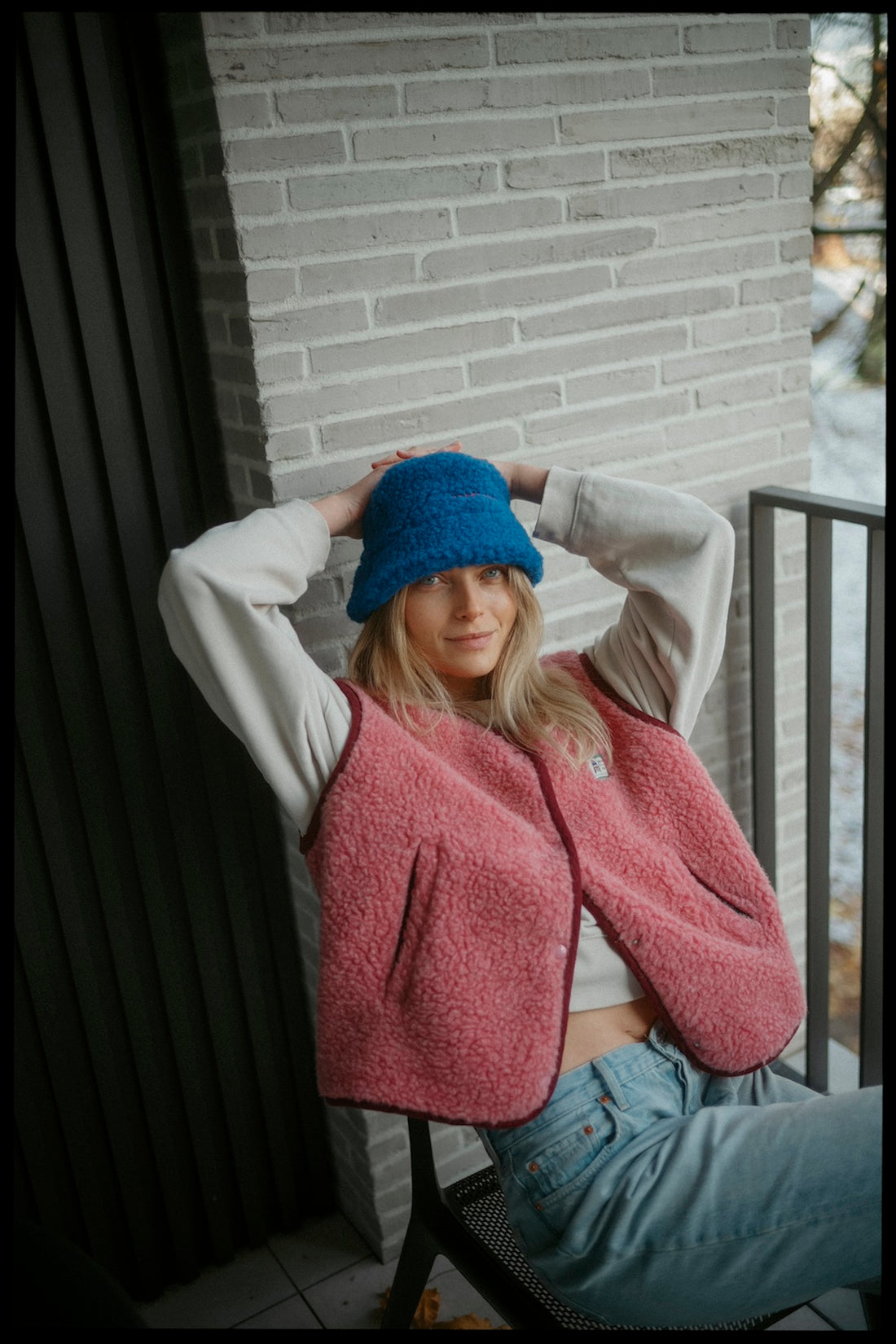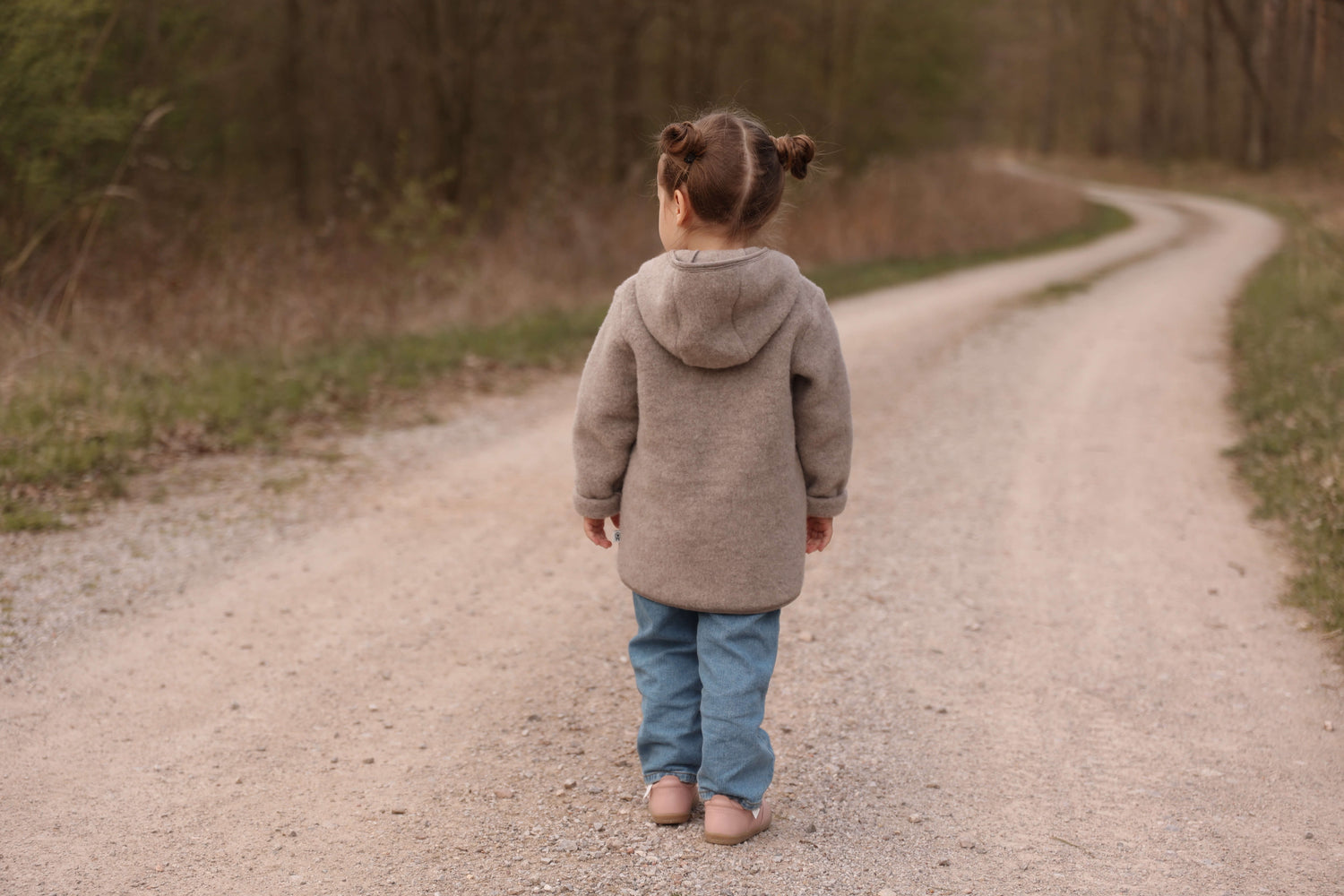Table of content
- What is merino wool?
- What does “mulesing-free” mean?
- What’s the difference between merino fleece and boiled merino wool?
- What makes merino wool special for kids’ clothing?
- Is merino wool itchy for sensitive skin?
- How do I wash merino wool?
- How do I care for fleece jackets and overalls?
- How to fix a merino wool sweater that shrank in the wash?
- Can kids really wear merino wool all year round?
- Why choose merino wool blended with silk?
- Are merino wool clothes worth the price?
- How do I style merino wool for kids?
- How should I store merino wool clothing?
- Does merino wool need ironing?
- How to remove stains from merino wool without damage?
- Do merino wool clothes shrink?
- How sustainable is merino wool?
If you’ve ever dressed your child in merino wool, you already know how special it is. Soft, breathable, naturally warm - it’s the kind of fabric that makes life easier for parents and more comfortable for kids. But if you’re new to merino, you might have some questions: Is it itchy? How do you wash it? What makes it different from regular wool?
I’ve gathered the most common questions I hear from other parents and answered them below. Along the way, I’ll share some of our favorite merino wool pieces from Dear Gaia’s Merino Wool & Silk collection, which has been a lifesaver in our family. You’ll also learn how to use the clothing brush to care for fleece jackets and overalls, and what makes merino fleece different from boiled wool.
❓ What is merino wool?
Merino wool comes from Merino sheep, a breed originally from Spain and now raised mostly in Australia, New Zealand, and South America. Unlike traditional wool, merino fibers are much finer and softer, which makes the fabric smooth against the skin instead of scratchy.
Why it’s special for children’s clothing:
- Regulates body temperature (warm in winter, cool in summer).
- Absorbs moisture but still feels dry.
- Naturally odor-resistant and antibacterial.
- Soft, lightweight, and comfortable for sensitive skin.
- 100% natural, renewable, and biodegradable.
That’s why parents love using it for bodysuits, leggings, pajamas, and even outerwear like fleece jackets and overalls.
❓ What does “mulesing-free” mean?
Mulesing is a painful practice used on some Merino sheep to prevent fly infestations. Ethical producers now avoid this method and instead rely on natural, humane alternatives (such as selective breeding and better farm management).
When you see “mulesing-free merino wool,” it means the wool was sourced from farms that treat their sheep responsibly and don’t use this practice.
Why it matters:
- Ensures animal welfare.
- Supports sustainable and ethical farming.
- Gives you peace of mind that your child’s clothing is kind to both people and animals.
At Dear Gaia, all merino wool in our collections is certified mulesing-free.
❓ What’s the difference between merino fleece and boiled merino wool?
Both are wonderful, but they serve different needs:
- Merino fleece: Brushed, fluffy, and super cozy. Ideal for jackets, overalls, and vests.
- Boiled wool: Dense, compact, and wind-resistant. Perfect for structured outerwear.
Think of fleece as a soft hug, and boiled wool as a protective shield.
❓ What makes merino wool special for kids’ clothing?
Merino wool is very different from the itchy, scratchy wool many of us remember from our childhood. Merino sheep produce incredibly fine fibers that feel soft and smooth against the skin.
Why parents love it:
- Temperature-regulating: Keeps kids warm in cold weather, but also cool when they run around.
- Moisture-wicking: Absorbs sweat but doesn’t feel damp.
- Breathable & lightweight: Perfect for layering without overheating.
- Natural & biodegradable: A sustainable alternative to synthetics.
Clothing like the Merino Wool & Silk Overall or a Fleece Jacket shows these qualities beautifully — cozy, lightweight, and never bulky.
❓ Is merino wool itchy for sensitive skin?
This is one of the biggest concerns parents have - and the good news is: no, merino wool isn’t itchy. The fibers are much finer than traditional wool, which means they bend easily against the skin instead of poking it.
In fact, many children who can’t tolerate regular wool do just fine in merino wool. If you’re still worried, start with something like the Merino Wool & Silk Long-Sleeve Body. It’s worn directly against the skin, so you’ll quickly see how comfortable it feels.
❓ How do I wash merino wool?
Merino wool sounds delicate, but it’s actually very easy to care for if you follow a few simple rules:
- Hand wash cold or machine wash on a wool or delicate cycle (no more than 30°C), no spinning.
- Use a wool detergent (regular detergents can damage fibers).
- Avoid fabric softeners (they coat the fibers and reduce breathability).
- Air dry flat — don’t tumble dry, as heat can shrink wool.
A little bonus: merino doesn’t need washing as often as cotton. Because it resists odor, you can air it out between wears. That’s why items like the Merino Wool & Silk Leggings last so beautifully, even with active kids.
❓ How do I care for fleece jackets and overalls?
Merino fleece is soft, warm, and cozy — but it benefits from special care.
- Air between wears. The fibers naturally release odors.
- Brush instead of frequent washing. The Natural Clothing Brush is perfect for removing lint, dust, and crumbs while keeping fleece fluffy.
- Wash sparingly. Only when truly soiled.
How to brush: Lay the fleece jacket or overall flat, close zippers or buttons, and gently stroke the brush along the direction of the fibers. This maintains the pile and prolongs the garment’s life.
❓ How to fix a merino wool sweater that shrank in the wash?
Accidents happen - but don’t panic if a merino piece shrinks a little. You can often restore it:
- Soak the garment in lukewarm water with a gentle wool detergent. You can also soak it in hair conditioner.
- While damp, carefully stretch it back to the right shape. Avoid pulling too hard or rubbing the fibers.
- Lay it flat on a towel, gently roll out excess water, then reshape and leave to dry naturally.
This method works especially well for heavier items like merino overalls or sweaters. The key is patience and no sudden heat changes.
❓ Can kids really wear merino wool all year round?
Yes! This surprises many parents. Merino isn’t just for winter — its temperature-regulating properties make it a great fabric all year long.
- Winter: Fleece jackets, overalls, and vests layered over bodysuits and leggings.
- Spring & autumn: Bodysuits and leggings make the perfect base layer. Add vest on top in the morning and evening or when it gets cold.
- Cool summer evenings: A lightweight merino & silk pajama or hat keeps little ones comfortable.
It’s one of the reasons I love investing in merino pieces - they don’t sit in the closet for half the year.
❓ Why choose merino wool blended with silk?
Some of the best kids’ pieces combine merino wool with silk, and for good reason:
- Silk makes the fabric even softer and smoother.
- It adds strength, so the clothes last longer.
- It gives the fabric a slight sheen and more flexibility.
Dear Gaia’s Merino Wool & Silk Collection includes beautiful blends — like the long-sleeve bodies, leggings, and overalls — that are especially gentle for babies and toddlers.
❓ Are merino wool clothes worth the price?
I get it - merino wool can feel like a bigger investment compared to fast fashion. But here’s why I think it’s worth every cent:
- Durability: The fibers are strong and don’t lose shape easily.
- Less washing: You save time and energy by washing less often.
- Hand-me-down quality: Merino holds up so well that siblings (or friends) can reuse it.
- Comfort = fewer struggles: When kids love how something feels, getting dressed is so much easier.
For example, a Merino Wool & Silk Body might cost more upfront than a cotton one, but it often lasts longer and stays looking new even after lots of wear.
❓ How do I style merino wool for kids?
The beauty of merino wool basics is that they’re versatile and layer-friendly.
- Merino bodies work as base layers under sweatshirts or dresses.
- Merino leggings can be worn under corduroy trousers or on their own indoors.
- Overalls are perfect for outdoor adventures or as cozy pajamas.
I often mix a neutral merino piece with brighter cotton or corduroy — that way, my child stays warm and practical but still gets to enjoy cheerful colors.
❓ How should I store merino wool clothing?
Proper storage makes a big difference in how long merino lasts. Always store pieces in a dry, airy place, away from direct sunlight. Skip plastic bags — they trap moisture and can cause mildew. Instead, fold items neatly in breathable fabric bags or drawers.
For extra protection against moths, tuck in natural repellents like lavender sachets or cedar blocks. That way, your merino wool leggings or overalls stay safe until next season.
❓ Does merino wool need ironing?
One of the best things about merino: it’s naturally wrinkle-resistant. Most pieces bounce back into shape just from hanging or being worn.
If you do want to smooth out wrinkles, use the lowest heat setting on your iron, and always place a damp cloth between the iron and the wool. Avoid direct contact, as high heat can damage the fibers. In most cases, though, you can skip ironing altogether.
❓ How to remove stains from merino wool without damage?
Merino wool is delicate, but stains don’t have to be permanent. If your child spills something, treat it quickly:
- Blot (don’t rub) the stain with a clean cloth.
- Rinse gently with cool water.
- For tougher stains, use a wool-safe detergent or mild soap.
Avoid hot water, bleach, or aggressive scrubbing — they can shrink or weaken the fibers. With a little care, even your child’s favorite merino wool shirt can look fresh again.
❓ Do merino wool clothes shrink?
If cared for properly, merino wool won’t shrink. The trick is avoiding heat: wash cold, don’t tumble dry, and always reshape garments while they’re damp.
Another tip: look for pieces designed with kids in mind, like foldable cuffs on the Merino Wool & Silk Overall. They grow with your child, so you get more than one season of wear out of them.
❓ How sustainable is merino wool?
Merino wool is a natural, renewable, and biodegradable fiber. When blended with silk, it still keeps its eco-friendly edge while gaining extra softness and durability. Compared to synthetic fabrics, merino breaks down naturally and avoids the microplastic problem.
When you choose GOTS-certified merino & silk, like the pieces in Dear Gaia’s collection, you’re also supporting ethical production and safe dyes. It’s a fabric you can feel good about — for your kids and for the planet.
The benefits of merino wool for children, summed up
Merino wool really is one of those “once you try it, you never go back” fabrics for kids. It’s cozy, breathable, easy to care for, and lasts from one season to the next. Whether it’s a bodysuit for a baby, a fleece jacket for outdoor play, or leggings and pajamas for everyday comfort, these pieces quickly become family favorites.
So the next time you’re debating what to add to your little one’s closet, remember: with merino wool, you’re not just buying a piece of clothing — you’re buying comfort, durability, and peace of mind.









